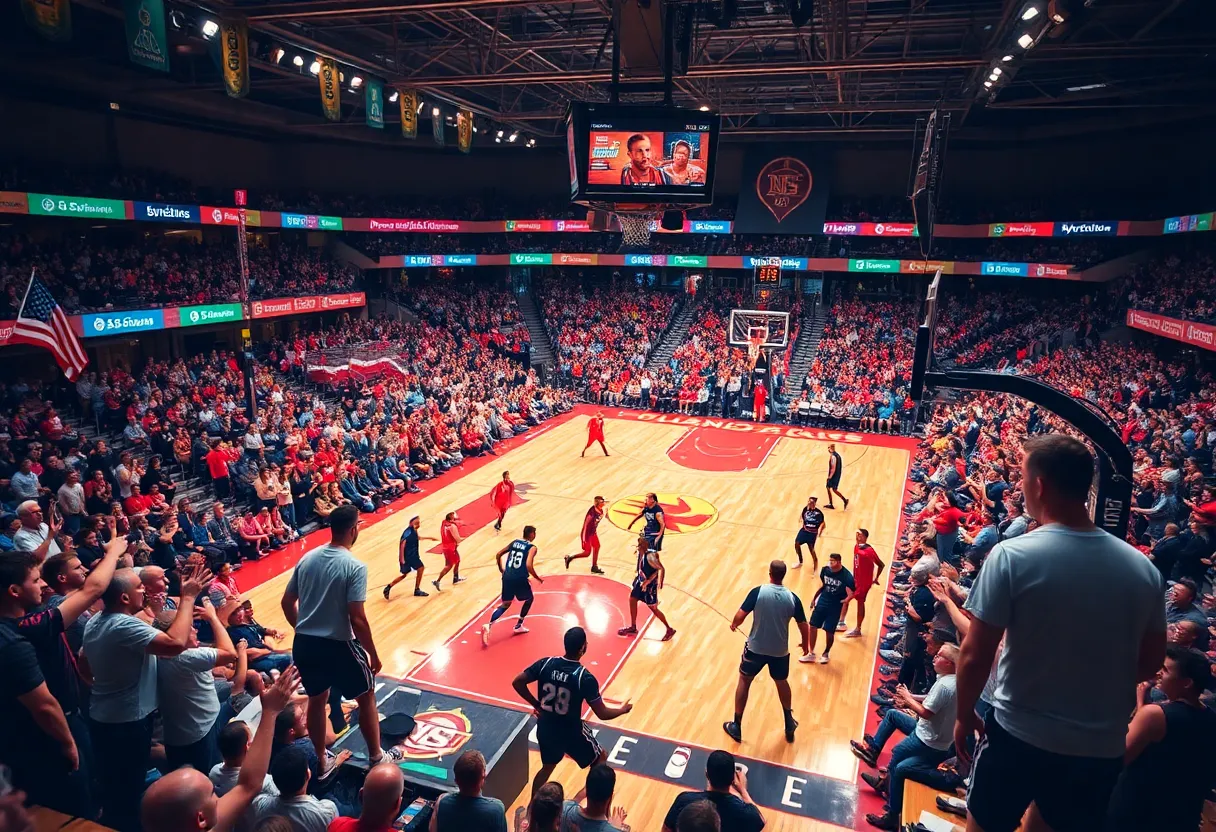Omaha, NE, October 25, 2025
Norfolk Southern Railway is facing critical challenges as it attempts to merge with Union Pacific. Regulatory concerns, rising operational costs, and antitrust issues threaten the ambitious merger, which aims to reshape the U.S. freight industry. Analysts point to various complexities that could postpone or complicate the merger process, as both companies navigate increasing competition and economic pressures.
Omaha, NE – Norfolk Southern Railway Faces Challenges in Potential Merger with Union Pacific
Omaha, NE – Norfolk Southern Railway is encountering significant obstacles as it moves forward with plans for a potential merger with Union Pacific, a major railway company based in this city. The deal faces regulatory hurdles, rising operational costs, and antitrust concerns, which could reshape the U.S. freight sector. Industry experts point to these issues as primary barriers to the merger’s success, highlighting the complexities involved in such a large-scale transaction.
At the forefront, regulatory hurdles pose the most immediate threat. Government oversight bodies are scrutinizing the merger to ensure it complies with federal laws, particularly those related to competition and safety in the railway industry. This scrutiny stems from the potential for reduced competition, which could affect pricing and service for customers nationwide. Additionally, rising operational costs are adding pressure, as both companies deal with increased expenses for fuel, maintenance, and labor. These costs have been exacerbated by recent economic factors, making the financial aspects of the merger more challenging to navigate.
Further complicating matters, antitrust concerns are a key focus for analysts. The merger would combine two of the largest freight rail operators in the U.S., potentially leading to a dominant market position. This could limit options for shippers and impact overall market dynamics. Experts warn that such consolidation might require divestitures or modifications to gain approval, delaying the process and increasing uncertainty.
Supporting these challenges, recent data from the freight sector indicates that operational efficiencies have declined due to supply chain disruptions and inflation. For Norfolk Southern, based in Atlanta, and Union Pacific in Omaha, merging operations could offer long-term benefits like expanded networks and cost savings. However, the immediate hurdles underscore the need for careful planning and negotiation.
In the broader context, this potential merger represents a transformative deal for the U.S. freight sector. The railway industry has been evolving with technological advancements and shifting trade patterns, but mergers like this one are rare and heavily regulated. Norfolk Southern and Union Pacific together handle a substantial portion of the nation’s freight, transporting goods across vast distances. The outcome could influence employment, infrastructure investments, and economic growth nationwide.
Historically, railway mergers in the U.S. have faced similar issues, with past examples showing how regulatory interventions shaped final agreements. Analysts suggest that if approved, the merger could enhance efficiency by streamlining routes and reducing redundancies, but only if the companies address the current headwinds effectively. Stakeholders, including customers and investors, are closely monitoring developments, as the decision could set precedents for future consolidations in transportation.
Overall, while the merger promises potential benefits such as improved service and economies of scale, the combination of regulatory hurdles, rising operational costs, and antitrust concerns remains a significant barrier. As preparations continue, the industry watches to see how these challenges will be resolved.
This situation highlights the intricate balance between growth opportunities and regulatory safeguards in the freight sector, emphasizing the need for strategic adaptations in a competitive landscape.
To provide more depth, industry reports indicate that freight rail volumes have increased by approximately 5% in the past year, driven by e-commerce and manufacturing demands. For Norfolk Southern, this means managing higher traffic on existing lines, which amplifies operational costs. Union Pacific, as a key player in the western U.S., faces similar pressures but benefits from its strategic location in Omaha, a hub for logistics. The merger could integrate these strengths, yet antitrust reviews might require the companies to sell off certain assets to maintain market competition.
Furthermore, economic analyses suggest that if costs continue to rise at the current rate, the merged entity might need to invest heavily in technology and infrastructure to remain profitable. This could involve upgrades to digital systems for better tracking and efficiency, ultimately benefiting the national economy by ensuring reliable freight movement. Despite these possibilities, the path forward remains uncertain, with experts predicting a resolution could take months or longer.
In summary, the potential merger between Norfolk Southern and Union Pacific is a pivotal moment for the U.S. freight industry, navigating through regulatory hurdles, rising operational costs, and antitrust concerns while aiming for a more integrated future.
FAQ Section
- What challenges is Norfolk Southern Railway facing in its potential merger with Union Pacific?
Norfolk Southern Railway is navigating multiple challenges, including regulatory hurdles, as it prepares for a potential merger with Union Pacific, headquartered in Omaha. - What are the key headwinds mentioned by industry analysts for this merger?
Industry analysts highlight rising operational costs and antitrust concerns as key headwinds in this transformative deal for the U.S. freight sector. - How might this merger impact the U.S. freight sector?
This merger represents a transformative deal for the U.S. freight sector, potentially leading to changes in competition and operations nationwide. - Where is Union Pacific headquartered?
Union Pacific is headquartered in Omaha.
Key Features Chart
| Feature | Description |
|---|---|
| Regulatory Hurdles | Government oversight to ensure compliance with laws on competition and safety. |
| Rising Operational Costs | Increased expenses for fuel, maintenance, and labor affecting merger feasibility. |
| Antitrust Concerns | Potential reduction in market competition, requiring possible asset divestitures. |
| Transformative Deal | Aims to reshape the U.S. freight sector by combining operations for better efficiency. |





